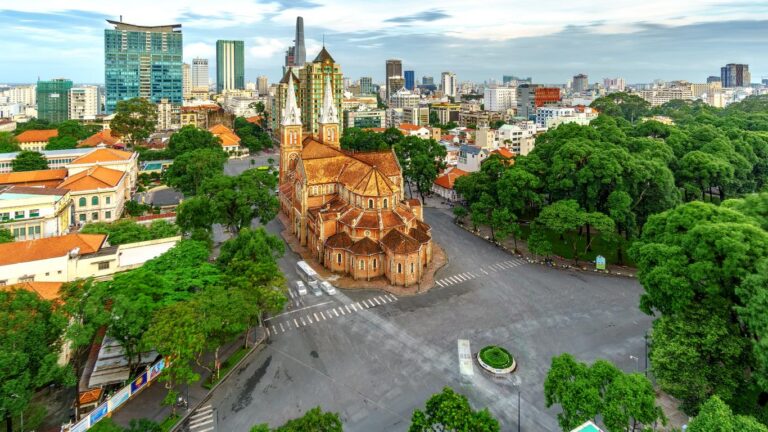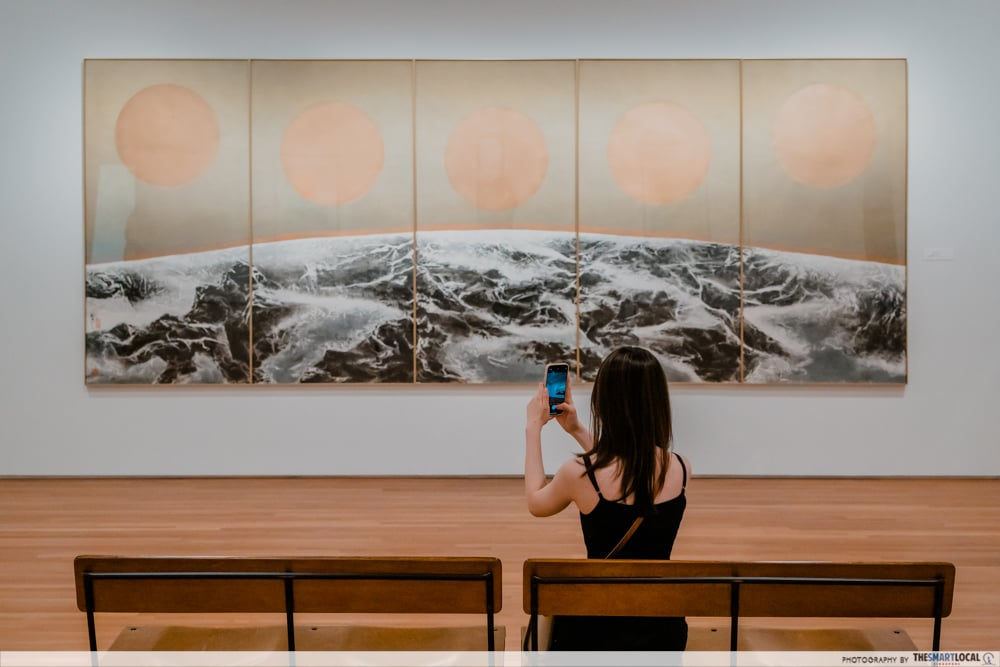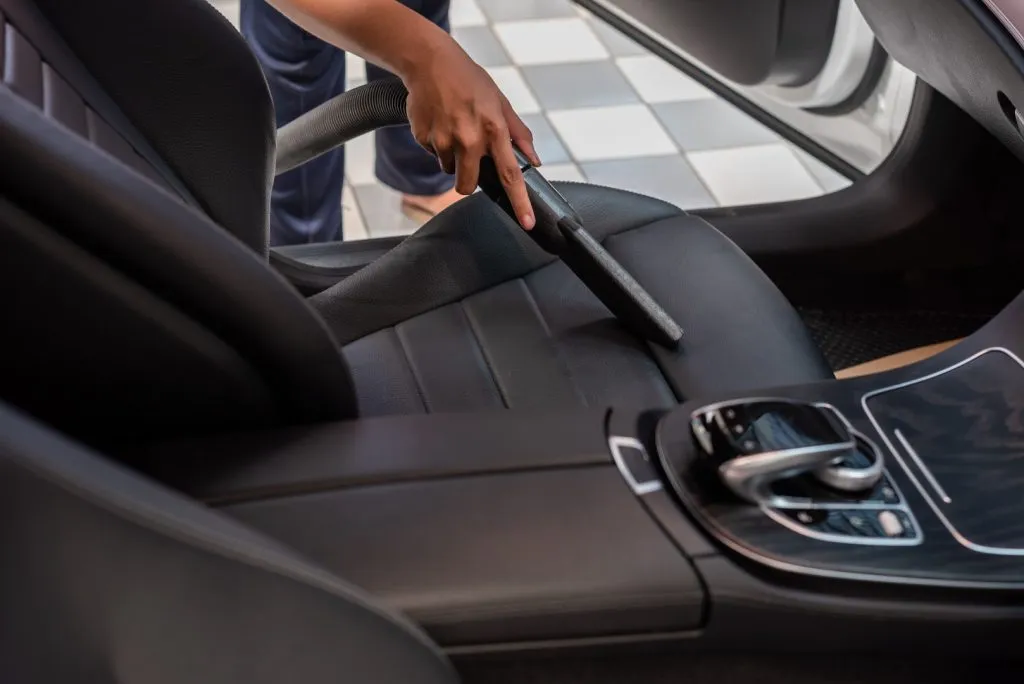Ho Chi Minh City (HCMC), formerly known as Saigon, is the largest city in Vietnam and serves as the economic and cultural hub of the country. With its dynamic mix of French colonial architecture, bustling markets, historical sites, and a thriving modern culture, HCMC offers a perfect balance of the old and new. Whether you’re a history enthusiast, a foodie, or a culture seeker, Ho Chi Minh City has something to offer for every traveler.
1. War Remnants Museum: A Glimpse into Vietnam’s Past
A visit to the War Remnants Museum is essential for anyone looking to understand the complexities of Vietnam’s past. Located in District 3, the museum offers a powerful and emotional journey through the Vietnam War, with exhibits showcasing photographs, military equipment, and first-hand accounts. The museum provides a sobering and insightful look at the impact of the war on Vietnam and its people.
- Must-See Exhibits: The museum’s collection includes war-related photos, military vehicles, aircraft, and the infamous “tiger cages” used by the South Vietnamese government. There are also exhibits about the international protests against the war.
- Educational Value: The museum helps visitors better understand the history of the Vietnam War and the struggles the country faced during that time.
2. Ben Thanh Market: A Vibrant Shopping Experience
For those who enjoy shopping and immersing themselves in local culture, Ben Thanh Market is a must-visit. Located in the heart of the city, this bustling market has been a trading hub for more than a century. The market offers a wide range of goods, from fresh produce and local delicacies to handmade crafts and souvenirs.
- Local Products: Sample local snacks like Vietnamese coffee, dried fruits, and bánh mì (Vietnamese sandwiches). You can also find unique souvenirs like handmade textiles, jewelry, and traditional Vietnamese hats.
- Haggling Culture: Bargaining is common in Vietnam, and it’s part of the fun at Ben Thanh Market. Don’t hesitate to negotiate for the best prices!
3. Notre-Dame Cathedral Basilica of Saigon: A French Legacy
One of the most iconic landmarks in Ho Chi Minh City, the Notre-Dame Cathedral Basilica is a beautiful example of French colonial architecture. Built in the late 19th century, the cathedral stands as a symbol of the city’s colonial history and religious heritage.
- Architectural Highlights: The cathedral’s red brick exterior, stained-glass windows, and towering spires make it a stunning sight to behold. It’s located in a lively square, perfect for people-watching and taking in the atmosphere of the city.
- Inside the Cathedral: Visitors can explore the interior, where you’ll find beautiful stained-glass windows and statues. The cathedral also offers mass services for those interested in experiencing the local religious culture.
4. Cu Chi Tunnels: A Journey Through Vietnam’s War History
Located just outside of Ho Chi Minh City, the Cu Chi Tunnels offer a fascinating and educational insight into the underground network used by Vietnamese soldiers during the Vietnam War. These tunnels were part of an extensive system that extended over 250 kilometers and played a crucial role in the resistance against American forces.
- Guided Tours: Take a guided tour of the tunnels, where you can crawl through narrow passageways, explore hidden chambers, and see how the soldiers lived and fought in such challenging conditions.
- War Tactics: Learn about the ingenious guerrilla warfare techniques that helped the Viet Cong soldiers survive and resist the enemy.
5. Saigon Central Post Office: A Historical Landmark
Another example of French colonial architecture in Ho Chi Minh City, the Saigon Central Post Office is an architectural gem. Completed in 1891, the building is still operational today, and visitors can admire its grand design while sending postcards or simply exploring its intricate details.
- Design Features: The building’s interior boasts a beautiful vaulted ceiling, intricate tile work, and a massive portrait of Ho Chi Minh, Vietnam’s revolutionary leader. The design combines European and Vietnamese architectural styles, reflecting the country’s colonial past.
- Postcards and Souvenirs: The post office is a great place to pick up some postcards or souvenirs as reminders of your visit.
6. The Bitexco Financial Tower: A Modern Marvel
For a modern contrast to the historical sites of Ho Chi Minh City, the Bitexco Financial Tower offers a striking view of the city’s skyline. Standing at 262 meters tall, this skyscraper is one of the tallest buildings in Vietnam. The tower is home to offices, shops, and restaurants, but its highlight is the Sky Deck on the 49th floor.
- Sky Deck: The Sky Deck offers panoramic views of Ho Chi Minh City, allowing visitors to see the sprawling cityscape, the Saigon River, and beyond.
- Dining and Shopping: You can also enjoy a meal at one of the tower’s upscale restaurants, or shop at the attached shopping mall.
7. Bui Vien Street: The Heart of Nightlife
Ho Chi Minh City comes alive after dark, and Bui Vien Street is the epicenter of its nightlife. Located in District 1, this lively street is filled with bars, restaurants, clubs, and street vendors. It’s the perfect place for travelers who want to experience the energetic atmosphere of the city after sundown.
- Nightlife: Whether you’re into casual bars or lively nightclubs, Bui Vien Street has something for everyone. Many places offer live music, karaoke, or DJ performances.
- Street Food: After a night of partying, grab a quick bite from one of the many food stalls offering delicious Vietnamese street food like pho, banh xeo (Vietnamese pancakes), and fresh spring rolls.
8. Saigon River Cruise: A Relaxing Escape
For a more peaceful experience, take a cruise along the Saigon River. The river offers a different perspective of the city, with views of the skyline, waterfront properties, and lush greenery. There are both daytime and evening cruises available, each offering a unique experience.
Evening Cruises: At night, the city’s lights reflect off the water, creating a romantic and tranquil atmosphere. Some cruises also offer dinner and entertainment.y make it an essential stop on any Southeast Asian itinerary.
Daytime Cruises: During the day, enjoy the cool breeze and take in the scenery, with views of the city and the countryside.






